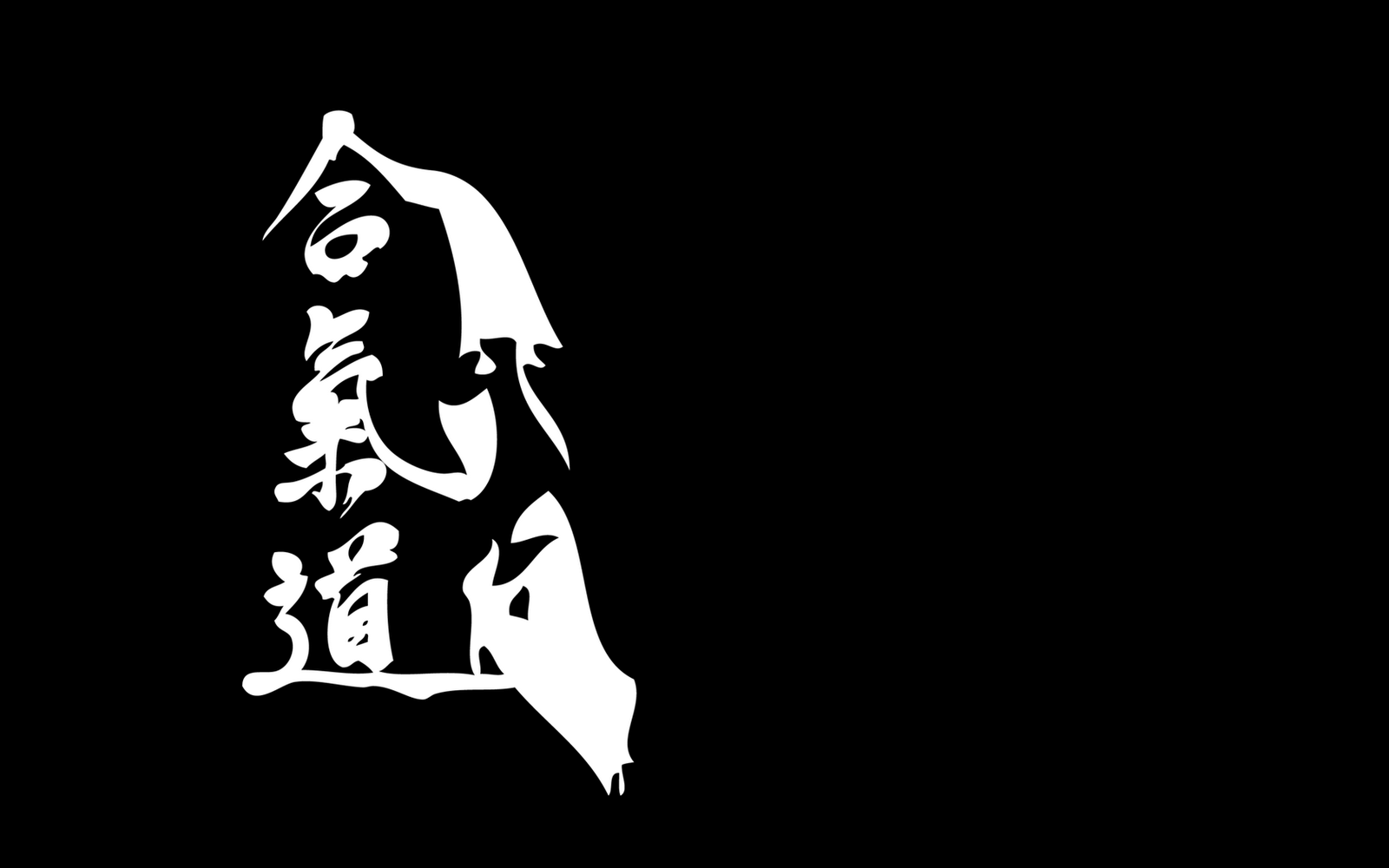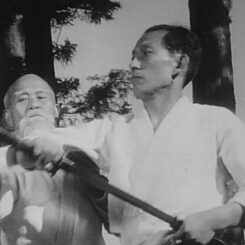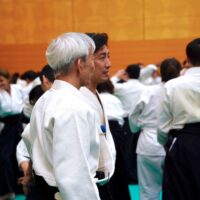Aikido was created by the incomparable budoka like Morihei Ueshiba. He went beyond bujutsu, which opposes the strong to the weak, opening the way for the development of personality by daily and constant refinement of the mind and body. Budo that corresponds to the modern era is called Aikido. Seeing in his youth the defeat of his father, a political opponent “beaten with a heavy fist”, he felt the need to study bu-jutsu. This event gave rise to an unyielding desire to devote himself, his whole life to the practice of Budo. Morihei Ueshiba learned the secret knowledge of traditional Japanese schools, such as Aya-Ryu Ju-jutsu, Kito-Ryu Ju-jutsu, Daito-Ryu Ju-jutsu, Ken Shinkage-Ryu, Hozoin-Ryu Sojutsu and others. We can say that his meeting with Takeda Sokaku in Daito-Ryu was defining and opened him a new perspective on Budo. Indeed, the practice of bu-jutsu did not lead to the salvation of society, could not satisfy it, and this forced Morihei Ueshiba to turn to spiritual practice. At the age of 18, he wanted to become a “Great Traveler”, and he left for Tokyo. After some time, he took 80 volunteers from there to Hokkaido, the “Northern Border”, where he was their teacher for 8 years and created the Shirataki settlement. At the time, he could only hear of Deguchi Vanisaburo, the organizer of Omoto Ke, who dreamed of creating a paradise on Mongolian soil. The death of his father, who understood and supported his son, plunged Morihei Ueshiba into deep sadness. The almost simultaneous loss of two sons added to his suffering, and there is no doubt that the outstretched hand and warm heart of the Reverend Deguchi rendered him invaluable help. The deep faith that he carried in himself since childhood, strengthened by a meeting with his Teacher, the tireless practice of bu-jutsu pushed him to find the path that leads through Bu to peace on Earth, and the Earth is the big House open to everyone. Studying with Reverend Deguchi, traveling with him to Mongolia, prison, death sentence, pardon at the last moment, experience of war, border between life and death – all this was added to his experience after returning to Japan to create a new, better Budo, founded on an absolute victory.
He went beyond bujutsu, which opposes the strong to the weak, opening the way for the development of personality by daily and constant refinement of the mind and body.
Once, after many years of work and training to achieve this goal, he was challenged by a naval officer, a fencing teacher. Morihei Ueshiba confronted him without a weapon, but the enemy could not even touch him with his sword during the fight. After the duel, O-Sensei got drunk from the well and walked a few steps through the garden. Suddenly he froze, motionless, feeling the earth sway beneath him. A rain of numerous golden rays fell from the sky and rose at the same time from the ground, transforming his body (Regarding this episode in the life of O Sensei, we refer the interested reader to the experiences of transmutation of other mystics belonging to different traditions. See, for example, the works of Mirsey Iliad). O Sensei purified body ascended within the universe. He understood the language of birds, saw the wind and all natural phenomena. Then he thought: “The desire for blind victory must become Love. The source of Budo is divine love and universal compassion. ” He realized in his insight that real Budo balances creation and protection. This is what Aikido is based on. At this time, Count Yamamoto Gombei, the oldest first minister, invited him to return to Tokyo. Reverend Degumi advises to respond to this proposal. Morihei Ueshiba gives lessons to the imperial entourage, the head of state, and noble families in Tokyo. The rest of the time he divides between military schools, the halls of the struggle of universities and large enterprises. However, by 1935, dissatisfied that Aiki bujutsu, its teaching and development was taking too much of his time, preventing him from developing personally, O-Sensei bought uncultivated land on Iwama in order to realize his dream of studying Budo in connection with the culture of the land. But the second world war began. The disciples were drafted into the army. Various branches of Budo fell under the influence of the government, which was impressed by conformism and did not satisfy the independent spirit of Budo. And then, distributing responsible posts among the students (in particular, entrusting the wrestling hall in Tokyo to his son), he left Tokyo to devote himself to creative work, created an open wrestling hall on Iwama, and there he constantly worked on the creation of Aikido. Due to his activeness and despite the prohibition of any form of martial arts practice by the American occupation authorities, O Sensei did not interrupt his work on the creation of Aikido, which was truly able to resume at the Tokyo Dojo in 1948 after the ban was lifted. In 1951, Master Moshizuki Minoru was the first to introduce Aikido to France and Europe. The following year, Master Abe Tadashi comes to Marseille with the aim of spreading Aikido in Europe. At the same time, Master Tohei Koichi teaches Aikido in Hawaii and America. In 1961, O-Sensei, at the age of 78, was invited to Hawaii for the grand opening of the Aikikai Dojo. This trip was the beginning of the true internationalization of Aikido. In 1956, with his permission, public demonstrations began. Numerous rooms are opening in schools, universities and businesses. Aikido is gradually spreading outside of Japan. In 1956, André Noke, the first Frenchman, came to work in the Aikikai. In the 60s, uchi deshi spread all over the world: Yamada Yoshimitsu in the USA, Sugano Seichi in Australia, Noro Mazamichi and Tamura Nobuyoshi in France, Shiba Kazuo in England, Kanai Mitsunari in the USA. At the same time, Teachers Nakazono Mutsuharu, Kobayashi Hirokazu, Tada Hiroshi, Asai Katsuaki, Ichimura Toshikazu and other masters from Aikikai come to Europe. Most of them are there permanently. The International Federation of Aikido, founded in 1975, includes 6 continental federations (including North and South America) and more than 40 national federations. Many other countries are not yet represented at the international level, although many of them are actively involved in aikido. The IFA (International Aikido Federation) is today a member of AGFIS (General Assembly of International Sports Federations).
Nobuyoshi Tamura. “Aikido”

 Azərbaycan
Azərbaycan 日本語
日本語 Русский
Русский






